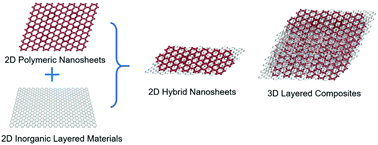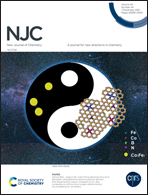Interface engineering and integration of two-dimensional polymeric and inorganic materials for advanced hybrid structures
Abstract
Two-dimensional layered materials (2DLMs) such as graphene and transition metal dichalcogenides have been at the forefront of materials science in recent years due to their excellent electronic, optical, thermal, and mechanical properties. On the other hand, 2D polymeric nanosheets (2DPs), such as 2D organic frameworks with analogous layered molecular structures, have also been undergoing rapid development. Inorganic 2DLMs and 2DPs have many complementary physical and chemical properties that can be integrated into advanced hybrid materials with a precisely defined molecular and interfacial structure and high performance. In this perspective, we introduce recent representative studies and summarize the latest developments in the field of advanced 2D and 3D hybrid materials based on the integration of 2DLMs and 2DPs. The intimate contact between atomically thin 2DLMs and 2DPs induces significant property changes in the individual components and also leads to new functionalities. Such hybrid 2DLM/2DP structures are critical for the fundamental study of organic/inorganic interfaces, as well as for practical applications in energy conversion and storage, molecular separation, and flexible electronics.

- This article is part of the themed collections: 2021 Focus and Perspective articles and NJC Emerging Investigators


 Please wait while we load your content...
Please wait while we load your content...